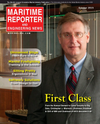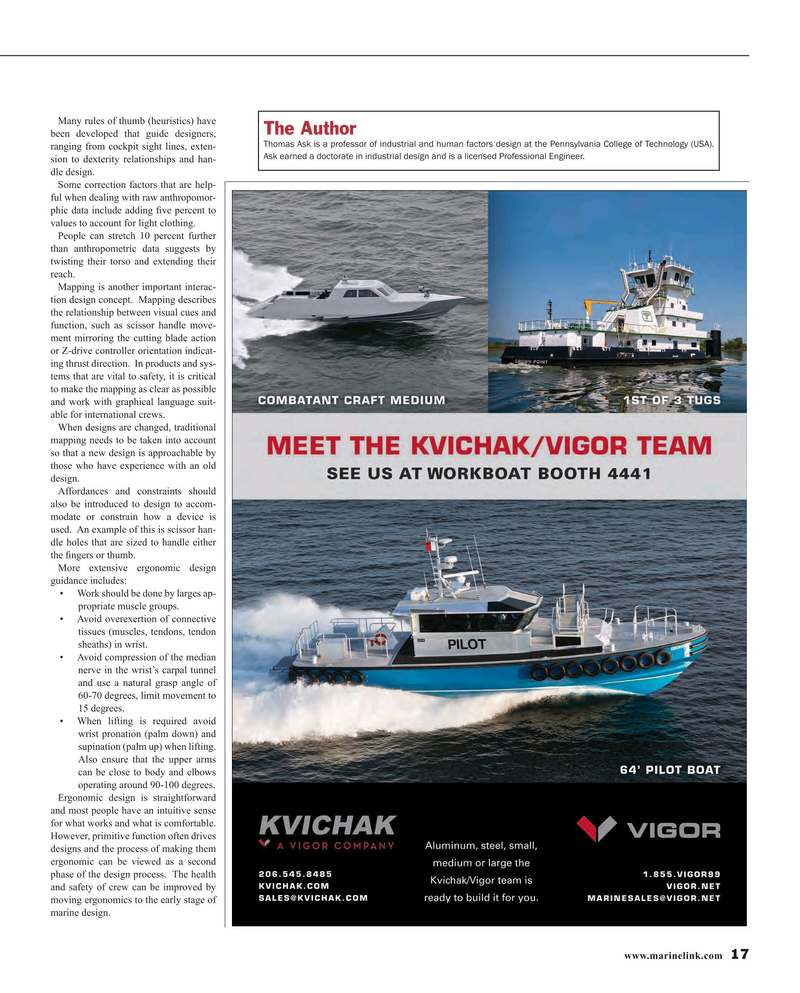
Page 17: of Maritime Reporter Magazine (October 2015)
Marine Design Annual
Read this page in Pdf, Flash or Html5 edition of October 2015 Maritime Reporter Magazine
Many rules of thumb (heuristics) have
The Author been developed that guide designers,
Thomas Ask is a professor of industrial and human factors design at the Pennsylvania College of Technology (USA). ranging from cockpit sight lines, exten-
Ask earned a doctorate in industrial design and is a licensed Professional Engineer.
sion to dexterity relationships and han- dle design.
Some correction factors that are help- ful when dealing with raw anthropomor- phic data include adding ? ve percent to values to account for light clothing.
People can stretch 10 percent further than anthropometric data suggests by twisting their torso and extending their reach.
Mapping is another important interac- tion design concept. Mapping describes the relationship between visual cues and function, such as scissor handle move- ment mirroring the cutting blade action or Z-drive controller orientation indicat- ing thrust direction. In products and sys- tems that are vital to safety, it is critical to make the mapping as clear as possible and work with graphical language suit- able for international crews.
When designs are changed, traditional mapping needs to be taken into account so that a new design is approachable by those who have experience with an old design.
Affordances and constraints should also be introduced to design to accom- modate or constrain how a device is used. An example of this is scissor han- dle holes that are sized to handle either the ? ngers or thumb.
More extensive ergonomic design guidance includes: • Work should be done by larges ap- propriate muscle groups.
• Avoid overexertion of connective tissues (muscles, tendons, tendon sheaths) in wrist.
• Avoid compression of the median nerve in the wrist’s carpal tunnel and use a natural grasp angle of 60-70 degrees, limit movement to 15 degrees.
• When lifting is required avoid wrist pronation (palm down) and supination (palm up) when lifting.
Also ensure that the upper arms can be close to body and elbows operating around 90-100 degrees.
Ergonomic design is straightforward and most people have an intuitive sense for what works and what is comfortable.
However, primitive function often drives designs and the process of making them ergonomic can be viewed as a second phase of the design process. The health and safety of crew can be improved by moving ergonomics to the early stage of marine design.
www.marinelink.com 17
MR #10 (10-17).indd 17 10/2/2015 1:30:38 PM

 16
16

 18
18
